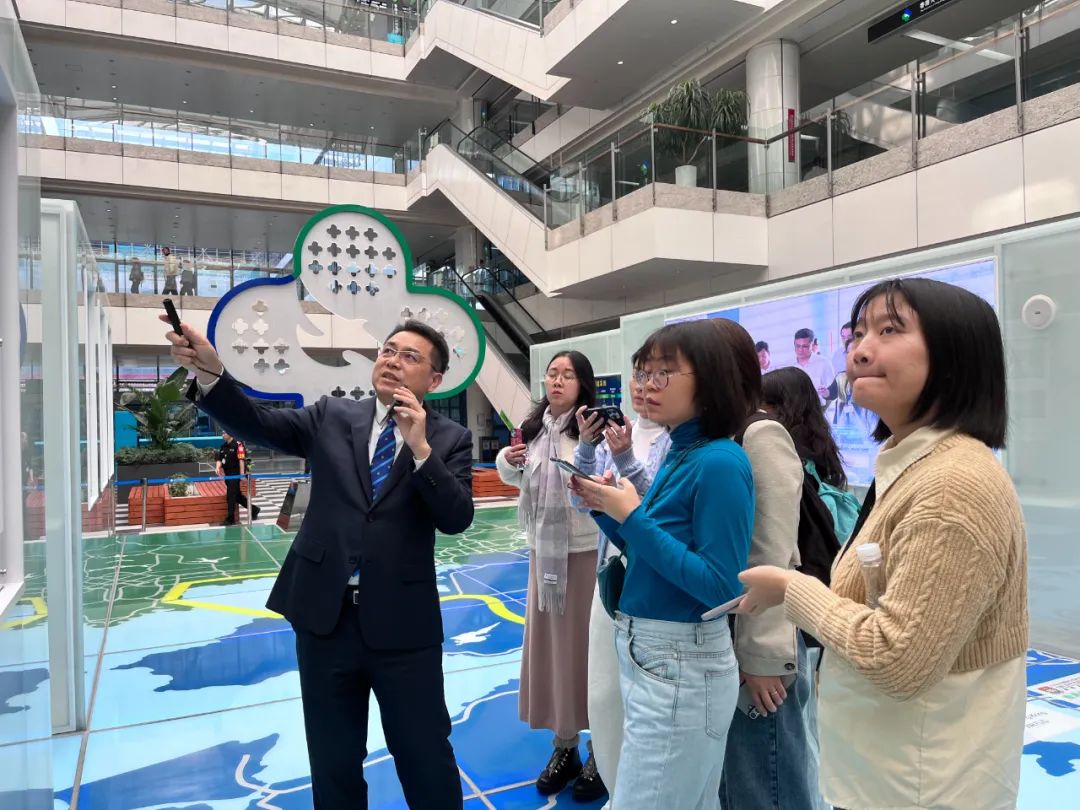Shenzhen leads in medical reforms, saves ¥14B in procurement

People wait in line to pick up their prescribed medication at a healthcare center in Nanshan District in this undated file photo. Photo from WeChat account “深卫在线”
Shenzhen has taken significant steps to promote medical reforms and introduced innovative mechanisms to revamp its healthcare system, according to a city official at a press conference hosted by the National Health Commission in Shenzhen today.
The city has taken a pioneering role in the cancellation of drug markups and the centralized procurement of drugs and medical consumables. These efforts have led to savings of 14 billion yuan (US$1.92 billion) in procurement costs, said Chen Qing, a member of the Standing Committee of the CPC Shenzhen Municipal Committee.
Since the beginning of the 14th Five-Year Plan period (2021-2025), Shenzhen has invested a total of 180.5 billion yuan in health finance, with an average annual growth rate of 11%, according to Chen.
“The city has established an investment guarantee mechanism for public hospitals, ensuring that all public hospitals operate without debt,” Chen said.
He added that in 2023, personal health expenditure accounted for 16.2% of the city’s total health expenditure, indicating that the burden of medical treatment on residents had been greatly reduced.
Chen emphasized that Shenzhen has made a significant stride in advancing the internationalization of China’s International Hospital Accreditation Standards, which were compiled by the Shenzhen Hospital Accreditation Research Center.
On Sunday, the Pamela Youde Nethersole Eastern Hospital became the first Hong Kong hospital to be accredited under the standards, marking a key milestone in cross-border medical evaluation.
On the same day, the Shenzhen Hospital Accreditation Research Center Hong Kong Office was officially opened, which will help expand China’s International Hospital Accreditation Standards to countries and regions along the Belt and Road and around the world.

Xu Xiaoping, Party chief of HKU-SZH, shares the hospital's experience in fostering cross-border healthcare integration between Shenzhen and Hong Kong during a field tour for the media this morning. Zhang Yu
The University of Hong Kong-Shenzhen Hospital (HKU-SZH) represents a collaborative medical endeavor between Shenzhen and Hong Kong. It has implemented innovative strategies and achieved notable success in fostering cross-border integration of healthcare services, according to Xu Xiaoping, Party chief of the hospital.
As the first mainland hospital to pioneer the remote settlement of Hong Kong medical service fees, HKU-SZH has implemented a pilot scheme supporting patients under Hong Kong’s Hospital Authority and the Elderly Health Care Voucher Scheme, providing services for Hong Kong patients more than 167,000 times, Xu said.
Additionally, it has taken the initiative to pilot direct cross-boundary ambulance transfers and the Hong Kong and Macao Medicine and Equipment Connect program.
“To date, it has received approval to utilize 27 imported medications and 17 imported medical devices, with over 5,000 instances of use. The insights gained from this pilot have been expanded to 45 designated medical institutions across nine cities within the Guangdong-Hong Kong-Macao Greater Bay Area,” Xu noted.
For talent connectivity, a mechanism has been set up to align the professional titles of Hong Kong physicians with their mainland counterparts, resulting in 37 esteemed Hong Kong doctors being awarded senior professional titles. They now enjoy equal status in terms of job appointments, research project initiation, and academic discipline development.
Luohu District’s medical reform has been a benchmark for the advancement of the healthcare system in Shenzhen. In recent years, the district has also introduced a series of innovative measures, according to Zuo Jinping, head of the Luohu District Government.
Zuo said that Luohu District’s medical reform, initiated in 2015, has focused on grassroots-level reforms, emphasizing institutional and mechanism changes aimed at reducing illnesses and hospitalizations while improving public health.
The district has strengthened the integration and sharing of medical resources and increased the capacity of community health institutions.
Credit:Reporter Zhang Yu and Editor Li Jing, Shenzhen Daily
Edited by HKU-SZH